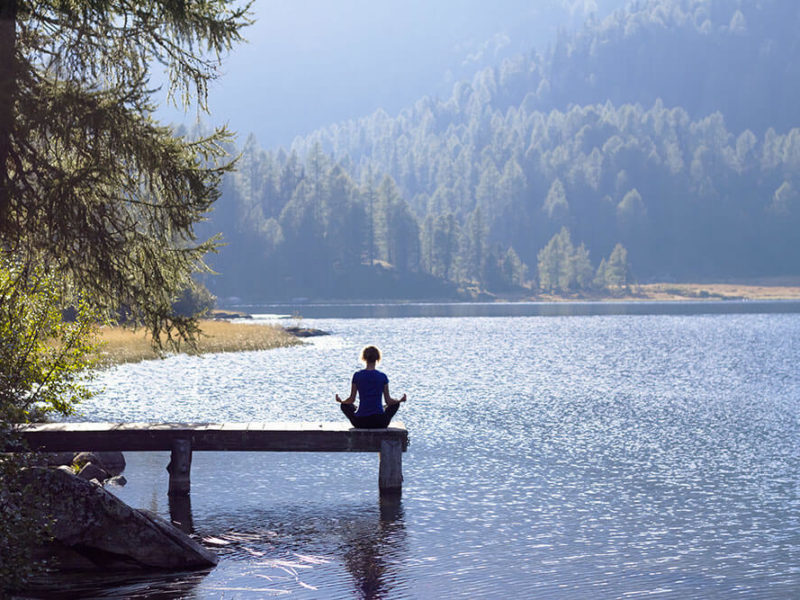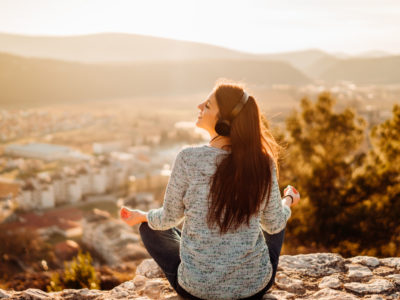Table of Contents[Hide][Show]
Are we kidding ourselves when it comes to “doing yoga”? Is modern yoga ancient? Or has it morphed into something else, which should not be called yoga? Let’s have a look at yoga’s roots and our modern take on it to discover the truth.
What Is Yoga?
Since yoga became popular in the West during the 19th Century, it’s changed dramatically. Some call it “Not Yoga”, in fact, because it’s so different from the traditional yoga of the ancient sages. Let’s call it modern yoga here, for simplicity.
So what are the differences between this modern yoga and traditional yoga? There are many!
Traditional Yoga vs. Modern Yoga
Traditional yoga is a complete system, according to the ancients. The yoga postures that we now understand as being “yoga”, were actually just a small part of this system. Yoga was actually a spiritual discipline, made up of several distinct “yogas”, which include the following.
- Raya Yoga, which aimed to cultivate the mind through mental discipline and meditation
- Hatha Yoga, which included cleansing techniques, breath control methods, bandhas (locks), mudras (seals), and remaining in asanas (poses) for extended periods of time
- Ghatastha Yoga, or purely physical yoga exercises
This gives you a rough idea of the added layers of yoga that seem to be missing from our modern practice, or comprise just a few minutes of a typical class.
Yoga is actually a subject of intense debate! But what it boils down to is this: the prominence of non-postural practices was significant in ancient yoga.
Pre-Classical Yoga
Look at pre-classical yoga scriptures like the Bhagavad-Gita, or Lord’s Song, and you’ll see that loving devotion, or Bhakti, knowledge or contemplation, or Jnana, and Karma (selfless action) were super-important facets of yoga practice during this time.
Classical Yoga
Take a sneak peak at yoga’s “classical period”, and Patanjali’s attempt to define and standardize yoga around the 2nd Century. It resulted in the famous 195 sutras—where he nailed down yoga as comprising an 8-fold path to enlightenment.
Asanas were just one step in this compact system designed to combine matter with spirit and make the body immortal.

Post-Classical Yoga
Here´s where yoga heads to the West, and gets a little modified, so to speak. Yoga Guru Swami Sivananda opened schools in the States and Europe, and compressed all the elements of the yoga system of old into a brand new set of principles. So now, yoga is basically:
- Relaxation
- Asanas
- Pranayama (breathing)
- A diet
- Positive thinking and meditation
Sivananda wrote profusely on the subject of yoga and had disciples who spread the word during the late 20th Century. One of them was Yogi Bhajan. Yoga was changing, not only in the West, but also in India, the homeland of yoga.
The Yoga Body
In 2010, Mark Singleton wrote a great book on the disparity between modern and traditional yoga. In the book, he says that there is no evidence in the Indian tradition of the kind of health and fitness-oriented Asana practice that dominates the global yoga scene this century, and that its popularity owes a lot to the spiritual aspirations of European bodybuilding and early 20th-century western women’s gymnastics movements.
Singleton argues that somewhere between way back when and right now, yoga has changed so dramatically, it’s almost unrecognizable.
Your Modern Yoga Class
So what does yoga look like now? Though the range of activities you might enjoy in any one yoga class depends on the school, teacher and their specific schedule for that session, here is a typical breakdown of what might occur:
- Sun salutations
- Specific postures held for a slightly longer period of time
- 5-20 minutes in Savasana (lying down) and/or Pranayama (breathing exercises)
Related
8 Benefits Of Zen Music For Stress Relief And Meditation (According To Experts)
Do you want to improve your meditation techniques? How about lowering your stress levels? Then make listening to Zen music a habit! Read about all its benefits here.
If your teacher is more advanced, you might also do some meditation, mudras, pratyahara (withdrawal of the senses), discuss values (yama) or perform kriyas (specific movements to access spiritual energy in the spine). But there is actually little evidence that yoga was even practiced in groups!
Mass Consumption
Yoga has reached such popularity in the States now that it is strange not to be able to go to a yoga class somewhere no matter what time it is! People are doing yoga in squares, parks, gyms, fitness centers, residential homes, pilates studios, bedrooms, and on roofs.
So does yoga make people feel fashionable? Some would agree that yoga is more about looking bendy and Instagram-able than learning an ancient method for spiritual progress now. The yoga industry is worth $27 billion and counting. But does that really matter?
Let’s be perfectly honest: yoga is making people healthier. In our sitting-down-almost-all-the-time culture, yoga is exactly what we need! Right? People are stressed, anxious, and depressed, and yoga relieves these uncomfortable conditions quickly and effectively for many.
But what about the hidden and almost forgotten facets of yoga? They were established for a reason. Could they add even more benefits to the yoga cure? And will yogis across the world realize they’re only getting a small part of the pie?
You May Also Like…





